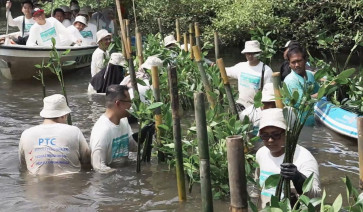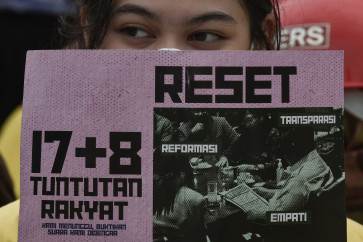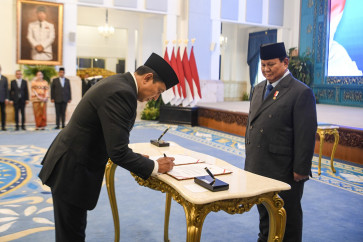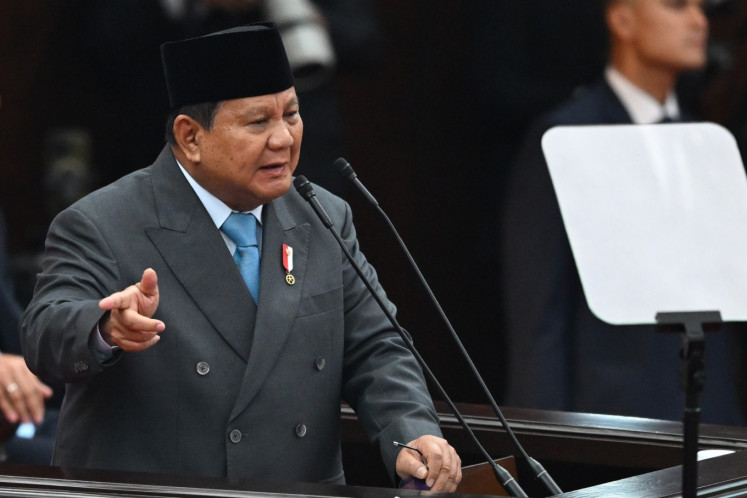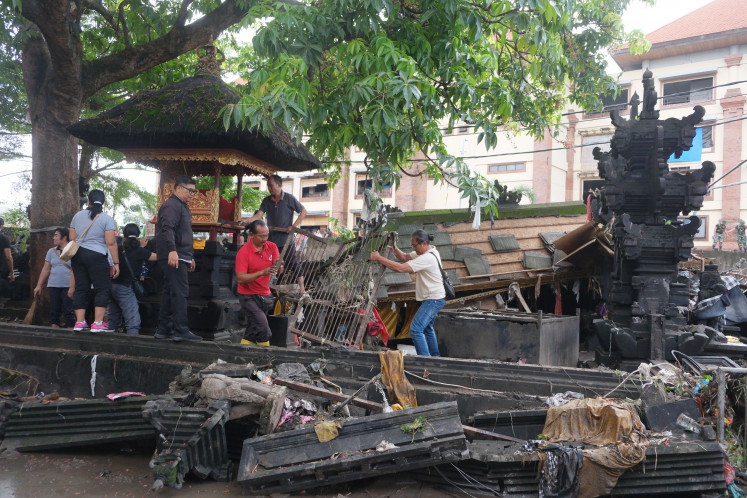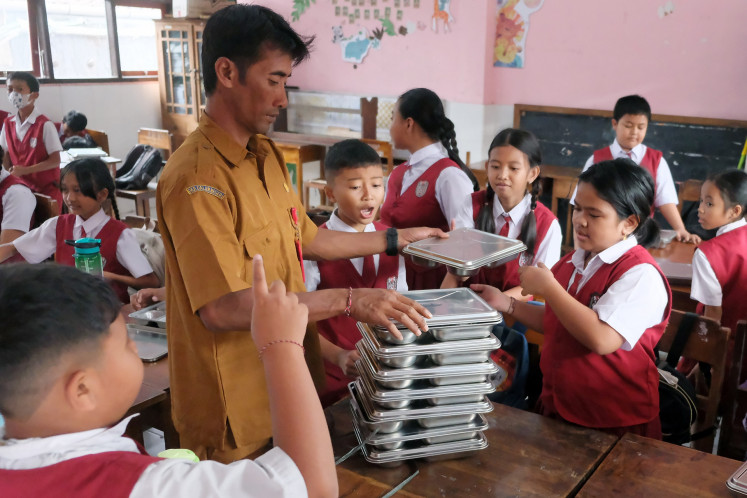Popular Reads
Top Results
Can't find what you're looking for?
View all search resultsPopular Reads
Top Results
Can't find what you're looking for?
View all search resultsHankook eyes 25 percent market share
Proclaiming itself the world’s seventh-largest tire manufacturer, South Korea’s Hankook Tire has just opened its seventh plant in Cikarang, West Java, as part of strategic efforts to become the fifth largest
Change text size
Gift Premium Articles
to Anyone
P
roclaiming itself the world’s seventh-largest tire manufacturer, South Korea’s Hankook Tire has just opened its seventh plant in Cikarang, West Java, as part of strategic efforts to become the fifth largest. Hankook executive vice president Hyun Bum Cho, South Korean President Myung Bak Lee’s son-in-law, spoke to The Jakarta Post’s Bagus BT Saragih during a meeting with Indonesian journalists recently in Seoul.
Question: We heard Hankook initially planned to build its seventh factory in Vietnam before deciding to place it in Indonesia. Why did you ultimately choose our country?
Answer: We spoke to the Vietnamese government before the financial crisis, that was about three years ago. After the crisis, we decided to halt our talks with Vietnam. When we learned more about the situation in ASEAN, it appeared Indonesia became more attractive than before because of its ability to recover. The government’s active support and open policy towards foreign investors were also influential in our decision to choose Indonesia as a partner. In addition,
Indonesia has a lot of potential young people with the spirit to learn and study. This is about human resources, which is a very important aspect.
But a recent survey by the World Bank’s International Finance Corporation on doing business placed Indonesia as a not-very-business-friendly nation. Did you find any difficulties in dealing with Indonesian bureaucracy?
We did not find any of the difficulties you mentioned. Maybe it is because the BKPM (Investment Coordinating Board) has been very helpful.
Was the potential Indonesian market also a factor that drew you to the country?
We know there are so many motorcycles in Indonesia. We did studies to predict, for example, how many motorcycle users will buy small or family cars in the next 20 years given the country’s economic growth. We also hope to double production within five years and win 25 percent of the Indonesian market.
Hankook is a newcomer here. What is your strategy to achieve 25 percent market share?
When we established our first plant in China in 1999, it was not so different from our current situation in Indonesia. Now, Hankook is the number one tire brand in China. Understanding the different characteristics of each market and preparing suitable strategies is the first step. In Indonesia and ASEAN, we focus on expanding distribution networks and enhancing brand awareness to increase sales in a fast changing market. So, we will open local dealerships and cooperate with local partners. However, we don’t have all the details on marketing strategy in Indonesia yet. The locations for our dealers are still to be decided but we will surely sell everywhere Bridgestone is selling or Gajah Tunggal is selling.
But Hankook is planning to export most of the tires produced at Cikarang. Why?
In Cikarang, we believe the production cost will be lower than in our factories in Korea and
China, so we shift the supplies for some of our export target countries to the Indonesian plant. Our
partners also recommended Indonesia, because the Middle-East market for example will be more encouraged to buy tires that are made in Indonesia. We are initially going to export 70 to 80 percent of the Cikarang products to the Middle East and North America. We need to wait until annual production reaches 18 to 20 million tires — we are currently producing 10 to 11 million tires — and then we will sell more in Indonesia and ASEAN. We plan to have 30 percent of our production sold in Indonesia, 11 to 20 percent in ASEAN and the rest for export.
Hyundai and Kia Motor Group also have plans to invest in Indonesia. Did this affect your decision to build a plant in Indonesia?
It was not our initial consideration. However, if Hyundai and Kia have decided to enter the Indonesian market, we could possibly establish partnerships.
About eight million motorcycles are sold every year in Indonesia and about 1,300 are sold every day in Jakarta alone. Why is Hankook not considering entering the motorcycle tire market?
For now we do not have plans to sell motorcycle tires. That option is not completely off the table though. About 80 percent of our production will be for family cars, sedans, and light trucks. The rest will be tires for public or mass transportation vehicles and heavy trucks.
What challenges do you face in selling tires in Indonesia?
I think the Indonesian market is very similar to any other emerging markets so the challenges are more generalized. I don’t think there are specific challenges in Indonesia, but if we have to pick one, it would be the infrastructure, especially the conditions of roads. Road infrastructure in Indonesia is not as developed as in the US, Europe or Korea. The streets are not as smooth as in other developing countries so tires have to be tougher. That was the same challenge we found in China seven to eight years ago. Therefore we already have the basic technology to address the problem and it will be localized for Indonesia so we can develop tires specifically suited for Indonesian road conditions and weather.
How do you think the ASEAN-China Free Trade Agreement will affect the tire trade?
It will trigger intensified competition among tire companies in Asia. Market demands for quality and price will rise accordingly. We will have to develop and sell products that satisfy market demand at the right time in order to be ahead of our competitors.
Will Hankook use Indonesian natural rubber at its Cikarang plant? If so, how much would it consume per year?
Initially, we will use 20,000 to 30,000 tons of natural rubber, all sourced from Indonesia. Eventually, when production is much larger by 2018, perhaps we will use 50,000 tons of Indonesian rubber. We plan to use other raw materials produced in Indonesia as much as possible. We only plan to secure raw materials from outside Indonesia only when the materials are unavailable or in short supply.
How did you finance the Cikarang plant?
The interest rate for manufacturing in Indonesia is quite high compared to Korea and other developed nations. So we will send the capital from Korea and we will use internal cash flow that we’re going to generate from Indonesia. We are not that worried [about financing].


